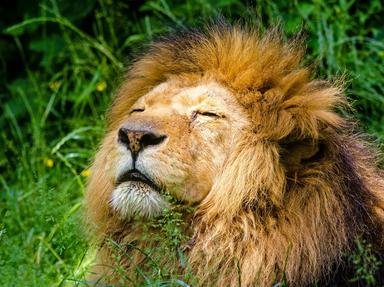Quiz Answer Key and Fun Facts
1. Welcome to our virtual safari, which will take you to see some of the spectacular animals to be found here in eastern Zambia. Starting here at Mfuwe Gate, we can spot some of the many hippopotamuses you will see enjoying the lush vegetation along the edges of the Luangwa River. Which of these phrases best describes Hippopotamus amphibius, the common hippo?
2. As we approach Croc Valley camp, where we will be spending the night, watch out for the crocs! The Nile crocodile (Crocodylus niloticus) is one of the most feared predators in African rivers. Is it the largest species of reptile in the world?
3. Here at Nkwali camp, you will periodically see elephants wandering between the lodges. What kind of elephant are you most likely to see?
4. Our next stop is at Tafika Camp, where you can relive (or fulfill) your childhood treehouse dreams. Here we may catch sight of a Cape buffalo, whose horns provide it with a formidable weapon of both defense and offense. It has been one of the most prized animals for game hunters, who gave what name to the animals considered most dangerous to hunt?
5. Thornicroft's giraffe is endemic to the southern part of the Luangwa Valley, so Kafunta Lodge makes an ideal base for a trip to see them. Which of these is an alternative name for this subspecies of giraffe, which was originally named after Harry Scott Thornicroft, a commissioner of Northern Rhodesia?
6. Crayshaw's zebra is not endemic to the Luangwa River Valley, but it is the most common zebra you will see while based at Luwi Bush Camp. It is a subspecies of Equus quagga, which is more commonly known as which of these?
7. Mchenja Bush Camp is the perfect spot for checking out Cookson's wildebeest, a subspecies of Connochaetes taurinus. C. taurinus is also known as the blue gnu.
8. Your visit to Nsefu Camp will be much more pleasant if you keep your eyes out, and avoid getting too close to one of these well-camouflaged venomous snakes. Its scientific name is Bitis arietans, but it is more commonly referred to as which of these?
9. Here at Sanctuary Puku Ridge Camp, we have a real treat for you bird watchers. This is a picture of Chaplin's barbet, the only bird which is truly endemic to Zambia.
10. Our tour finishes at Mwamba Bush camp, where you can see a male (on the left) and female of the subspecies Struthio camelus australis. What is their more common name?
Source: Author
looney_tunes
This quiz was reviewed by FunTrivia editor
rossian before going online.
Any errors found in FunTrivia content are routinely corrected through our feedback system.
